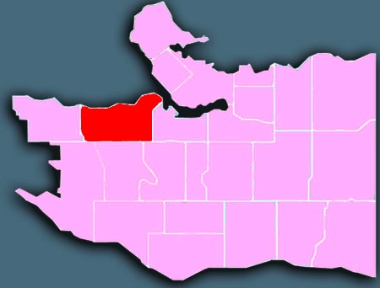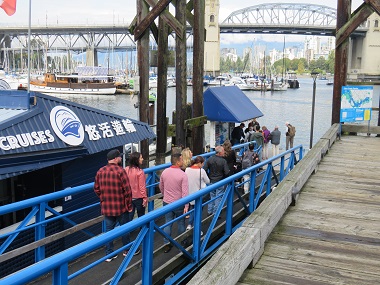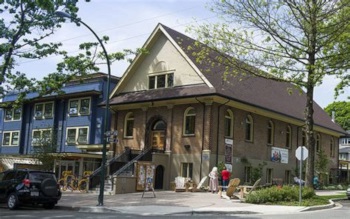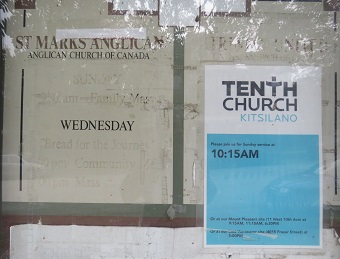 Four years ago Jonathan Bird and I posted a series on the neighbourhoods of Vancouver. We are offering them again, with demographics from the latest national census and some other updates.
Four years ago Jonathan Bird and I posted a series on the neighbourhoods of Vancouver. We are offering them again, with demographics from the latest national census and some other updates.
Kitsilano is a lively and storied neighbourhood, stretching along the flat lowlands of English Bay and straddling the hill that slopes up from Kits Beach – which was already a major summer camping destination for West End residents by the beginning of the 20th century, and is still one of Vancouver’s most popular beaches.
Kitsilano is bounded by Alma Street on the west, Burrard Street on the east and 16th Avenue on the south. To the north is English Bay.
Demographics
From Statistics Canada, 2016 Census, custom order for City of Vancouver Local Areas (comparative data for Census Metro Area in parentheses).
population: 43,045 19 & under: 13% (21%) aged 65+: 14% (16%)
married/common-law: 50% (57%) people living alone: 24% (11%) widows: 975 households with kids at home: 20% (39%) lone parent families: 1,290
moved in the past year: 20% (16%) moved in the past 5 years: 54% (44%) renters: 57% (36%)
median household income: $72,839 ($72,662) all persons in low-income: 15% (14%) 17 & under in low-income: 10% (15%) 65+ in low-income: 11% (10%)
ESL: 24% (43%) mother tongues: Mandarin 3%, French 3%, Cantonese 2%, Spanish 2%, German 2%

The dock on Granville Island looks out over the east shore of Kitsilano.
Kitsilano is a dense neighbourhood of renters and owners, where expensive heritage homes and waterfront properties mask significant poverty (often elderly widows) in older apartment buildings on the hill above Kits Beach, not to mention university students in secondary suites. There are also numerous social housing complexes and housing co-ops throughout the area, though more prevalent in the eastern section. More than half of residents move into/out of the neighbourhood every five years.
Adults aged 20 – 39 predominate. The percentage of people living alone is twice that of the region, while the percentage of households with children living at home is half that of the region. Kitsilano has by far the lowest rate of ESL speakers of any area in the city, and the third highest rate of native French speakers.
Once the centre of the Greek immigrant community (still celebrated in the annual Greek Day street festival on Broadway), Kitsilano still has more Greek speakers than other parts of the city but they have given way to folks from China and western Europe. Kitsilano has the fewest visible minorities of any neighbourhood.
History

August Jack Khatsahlano, his wife Swanamia (Marrian) and a child in a dugout canoe, looking east at Kitsilano Indian Reserve in 1907. City of Vancouver Archives AM1376-: CVA 1376-203
Kitsilano is the only Vancouver neighbourhood that acknowledges Indigenous history in its name, honouring hereditary Chief August Jack Khatsahlano (1867 – 1971) of the Squamish Nation, who became famous for working closely with the area’s first European settlers and recording the oral history of his people.
He lived many years at Sen̓áḵw, the village site just east of today’s Vancouver Museum-Planetarium complex. The village was incorporated into a reserve created in 1870, but was then confiscated in stages in 1886 and 1902 by the federal government. Sen̓áḵw’s inhabitants were barged to other villages by 1913.
In 2002 federal courts returned 11.7 acres located under the Burrard Street Bridge to the Squamish. The federal government still owns and manages Granville Island.
A CBC News article earlier this year stated:
The Squamish Nation’s proposal to build up to 3,000 apartment units southwest of the Burrard Bridge is shedding light on the historic ejection of members from their traditional territory in the area more than 100 years ago.

The view in Kitsilano today.
Kitsilano remained a dense second-growth forest well into the 20th century. The city notes on its Kitsilano page that:
The CPR (which owned most of the land east of Trafalgar), the BC Electric Railway’s streetcar line along 4th Avenue to Alma, and the Burrard Bridge, built in 1932, all played a role in opening up Kitsilano.
However, Kitsilano was not fully developed south to 16th Avenue until the late 1940s. During World War II, most of the old estates and many single-family homes along the slope above Kitsilano Beach were converted into rooming houses.
The Arbutus Greenway cuts through the eastern part of Kitsilano. Running from False Creek to the Fraser River, it was finally purchased from the CPR by the city in 2016, following years of debate about valuation and usage.
Notable features
Youth counterculture: By the late 1960s Kitsilano had become a global nexus for youth counterculture, alongside San Francisco’s Haight-Ashbury. That era and this neighbourhood did much to earn Vancouver its nickname of “Lotus Land.” The most visible trace of that ongoing influence is Banyen Books & Sound on 4th Avenue near Dunbar Street. As well, Greenpeace was launched in 1970 from a storefront at Cypress and Broadway.
Festivals: Kitsilano is home to several of Vancouver’s most popular events, including the Vancouver International Children’s Festival, Bard on the Beach, the Khatsahlano Street Festival and the Celebration of Light (which is held on the water between Vanier Park and the West End).

Kitsilano Neighbourhood House began as Alexandra Orphanage and Non-Sectarian Home Society, founded by the Women’s Christian Temperance Union.
Kitsilano Neighbourhood House describes itself as “the hub of the neighbourhood since 1894,” when it was opened as Alexandra Orphanage and Non-Sectarian Home Society – placing it among the first charitable organizations to be registered in BC. Originally located at 7th and Pine, it was moved six blocks west to Vine Street in 1972 (buying St. George Greek Orthodox Church, which moved to its current location on Arbutus Street).
In The History of Metropolitan Vancouver, Chuck Davis said:
A gala fundraiser at the Orpheum [September 9, 1994] marked the 100th anniversary of the Association of Neighbourhood Houses of Greater Vancouver. From its beginning as the Alexandra Orphanage [founded by members of the Women’s Christian Temperance Union and associated churches] in Kitsilano, the ANH evolved into a network of volunteer-based community centres.
A major redevelopment and expansion of Kits Neighbourhood House was completed May 22, 2015.
The Khalsa Diwan Society built what is believed to be the first Sikh Gurdwara in North America in 1908, at 1866 West 2nd Avenue. It remained in operation until it moved into a larger facility on Ross Street in 1970.
SkyTrain terminus (for now): SkyTrain announced the future Broadway SkyTrain underground stations September 18; the last one will be:
• Arbutus, the terminus station: Located at the northeast corner of Broadway and Arbutus Street, this station and bus loop will connect passengers destined for the University of B.C. with B-Line bus service.
Churches

Redemption Church is just one block east of Alma, on 7th Avenue.
Kitsilano is one of the least-churched areas in the city.
- Canadian Memorial United Church
- Christ City Church Kitsilano
- City Life Church
- Lord’s Grace Church
- Redemption Church
- St. Augustine’s Catholic Church
- Tenth Church Kitsilano (moving to Arbutus Ridge)
See map.
Tenth Church Kitsilano has been forced to move from the St. Mark’s Anglican Church building at the end of this month as it is being sold for housing. Tenth will now meet at Carvarvon Elementary School, which is south of 16th, so it will technically now be in the Arbutus Ridge neighbourhood. City Life is into its third year at Westpointe’s former location, though it is just a matter of time before it will have to find a new home as well.

St. Mark’s is gone, and soon Tenth Church Kitsilano will be as well.
Kitsilano Bible Baptist, the Salvation Army, St. Mark’s Anglican, Trinity United (both St. Mark’s and Trinity were at 2nd and Larch; there will soon be no church there) and Westpointe Christian Church have all moved out or closed over the past few years. Christ City Church entered into a unique partnership with The Bridge to plant Christ City Church Kitsilano. Church planting would seem to be a priority.
Here are a couple of ways in which Kitsilano churches are linked to their neighbourhood:
- The Kits Cares Cafe is a community dinner served every Thursday at 5 pm by five congregations in partnership with Kitsilano Neighbourhood House and the Planted Community Food Network.
- St. Augustine’s Parish has run an elementary school for many years; students moved into a new building in September 2015.
Further information
- The City has a Kitsilano page
- Kitsilano.ca – news and events around Kitsilano
- West 4th BIA
- Kits on Broadway BIA
